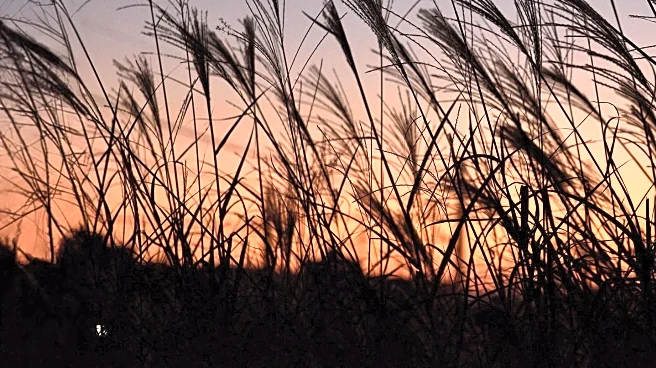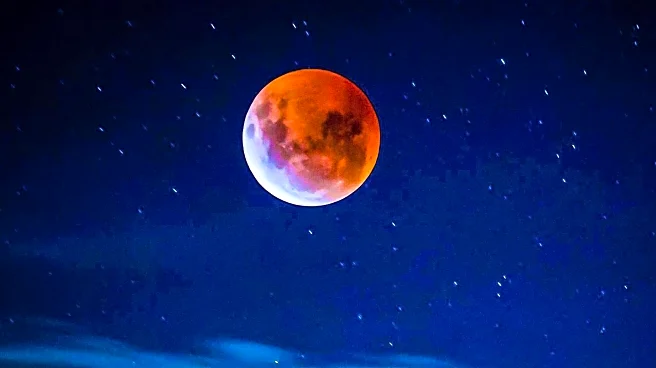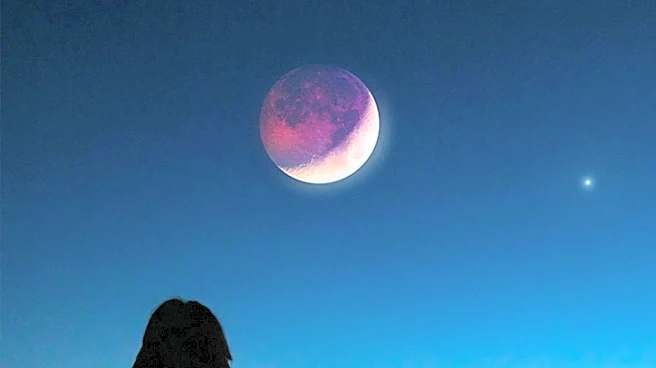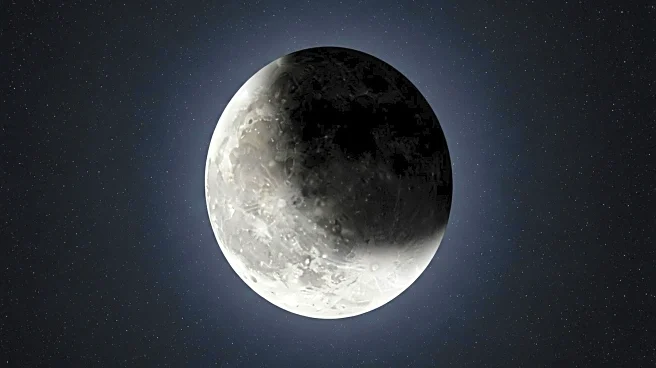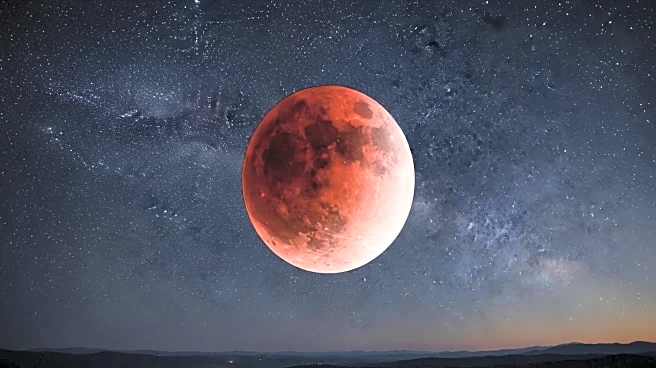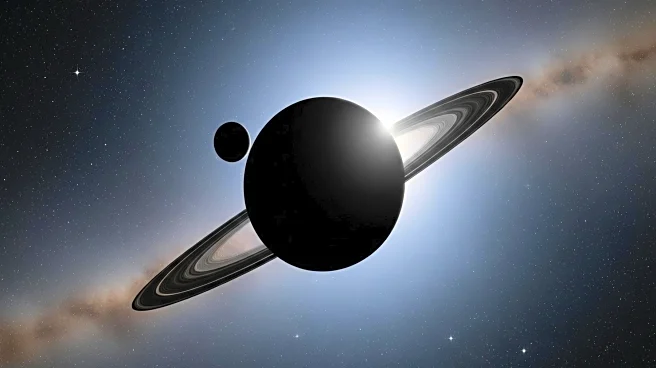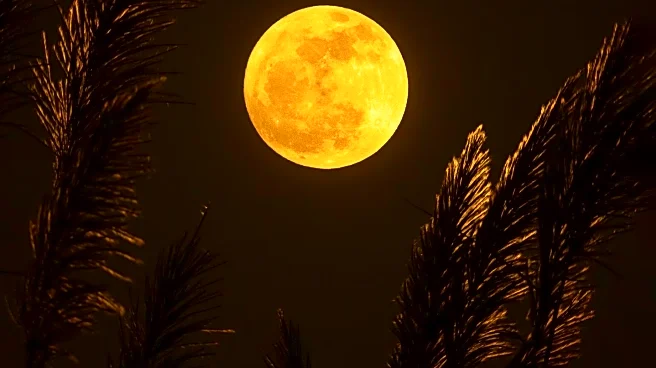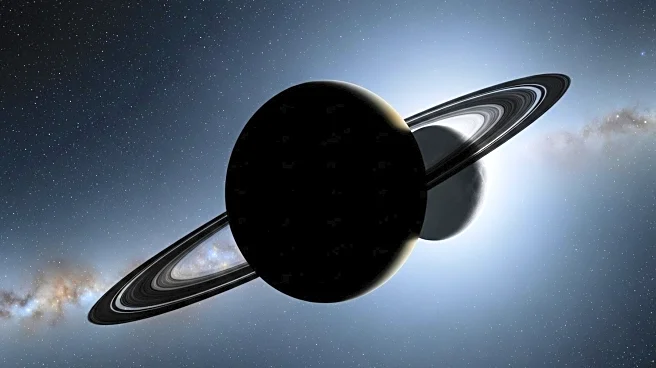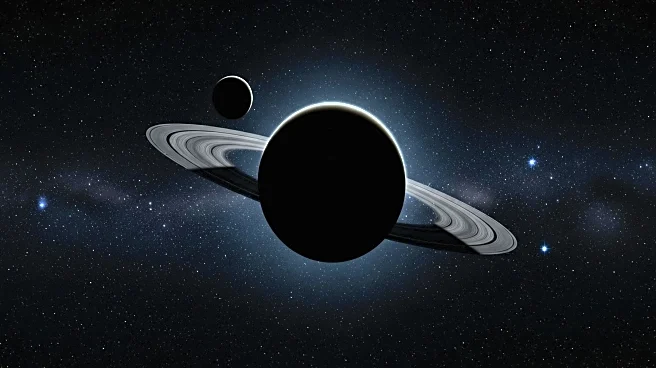What's Happening?
On September 7, a full moon will rise, known as the Corn Moon, rather than the Harvest Moon. This distinction arises because the Harvest Moon is the full moon closest to the fall equinox, which this year falls on September 22. Typically, September's full moon is the Harvest Moon, but occasionally it occurs in October, as is the case this year. The Corn Moon is named for its association with the corn harvest, a tradition linked to various Native American tribes. The Harvest Moon is notable for the 'Harvest Moon Effect,' where the moon rises at sunset for several nights, providing extra light for farmers during the harvest season. This effect is due to the moon's orbit being tilted toward the Earth's horizon in the Northern Hemisphere around the autumn equinox.
Why It's Important?
The timing of the Harvest Moon has practical implications for agriculture, as it historically provided farmers with additional evening light to complete their harvests. This phenomenon underscores the importance of lunar cycles in agricultural planning and cultural traditions. The Corn Moon, while not providing the same extended light, still marks a significant period in the agricultural calendar, particularly for corn harvesting. Understanding these lunar cycles can aid in planning and optimizing agricultural activities, which is crucial for farmers and those involved in food production.
What's Next?
The next steps involve observing the lunar cycle's impact on agricultural practices and cultural events. As the Harvest Moon occurs in October this year, farmers and communities may adjust their harvest schedules accordingly. Additionally, the Corn Moon's occurrence may prompt educational and cultural activities that highlight its significance in Native American traditions. Observers in the U.S. can watch the lunar eclipse online, as it will not be visible during daylight hours.
Beyond the Headlines
The shift in the Harvest Moon's timing this year may lead to discussions on how lunar cycles affect cultural and agricultural practices. It highlights the intersection of astronomy and agriculture, offering opportunities for educational initiatives that explore these connections. The Corn Moon's association with Native American traditions also presents a chance to delve into cultural heritage and its influence on modern agricultural practices.
